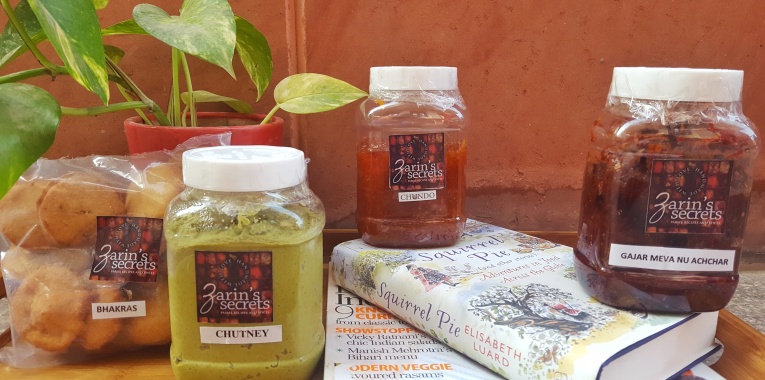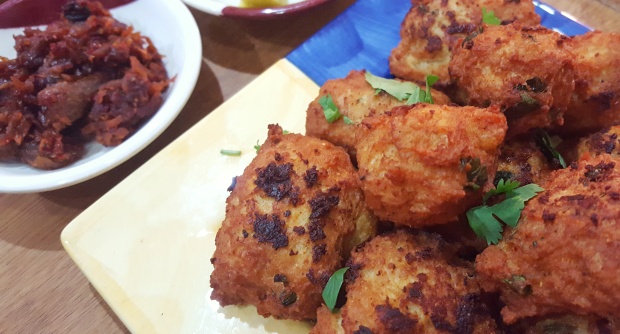Writing a review takes it’s own time. You have to go through proper tasting sessions, make notes, register all the flavours, decode the ingredients and then bring it all together. It’s even more tough when you are doing it for spices, because how exactly do you review spices? Well, this time I had to.
Continuing the 5-series blog with Shelley Subawalla (owner & founder of Zarin’s Secrets), I ordered a bunch of products from chutneys, bhakras to the 4 signature Parsi spices (Dhansak Masala, Curry Masala, Sambhar Masala & Dhana Jeera), I have been talking about ever since the series began. Now, I had the monumental task of reviewing these spices by cooking the dishes and understanding what flavours were at play. However, I faced challenges I wasn’t expecting – Did I cook it right? How can I know what it’s actually supposed to taste like?
Well, I couldn’t. I can’t. But maybe that’s okay, because this review is for a cuisine I am extremely new to, it’s for products which are not easy to review, it’s based on my cooking skills rather than the chef’s in a professional kitchen and most importantly I am sharing an experience from the kitchen which anyone (non-parsi & not an expert cook) would face with these products. So, yes it’s not going to be the same. It will be unconventional.
Dhansak Masala: The masala in itself is quite fine and used for dhansak.
It is pretty much the signature Parsi dish for all Non-Parsi’s; however, getting my hands dirty in the kitchen I realised how simple it is to make! Combining elements from Parsi and Gujrati cuisines it is rich & amusingly sour (raw mango and a generous lemon squeeze on top do the trick). It was quite fascinating to use lentils, vegetables & red meat all in one pressure cooker and end up with a beautiful concoction of the three.
Result – A relatively simple recipe and a few spices, it worked wonders! Though I wasn’t sure if the curry was supposed to be as thick as it turned out but the subtle flavour of spices enhancing the richness of mutton, it can make for some wholesome meals. It took me a few tastings to accommodate my palate to it, I am used to more robust flavours so it wasn’t my favourite dish from the get-go but if you are someone who likes dhansak you should give this homemade spice a try.
Recommendation (Approved by Shelley) – Pair it will caramelised brown rice and make sure you caramelise the onions slowly until they turn beautifully golden brown.
Curry Masala: The Saturday tradition recipe involves the humble curry masala.
Curry rice is a simple dish with soft coconut and curry leaves flavour infused in meat. I cooked this dish with chicken however, as Shelley says you are free to use any kind of protein you like. Prawns, fish, potatoes, lamb, try your heart out! Pair it with white rice for a perfect meal.
Sambhar Masala: Bright rustic orange in colour, it is slightly coarse as compared to other spices and also quite wet. Used in dhansak as well as Masala fish, it is a spice you cannot miss when prepping for Parsi cuisine.

Dhana Jeera: I would call this the underdog of spices which out-shined all others. Used in an array of dishes, I tried Salli Ma Marghi and Parsee Kebabs with it.
Salli Ma Marghi is an appetiser infused with a soft bhuna flavour and sweet notes from caramelised onions. Topped with potato sticks for crunchiness, it’s mild flavour can woo over anyone.
Parsee kebabs were a delight to cook. Even though they didnt quite turn out right in shape, the flavour from dhana jeera mesmerised me. While marinating, I could smell the spices suffusing in chicken mince and after removing the plate from top, the strong waft hit me like a cloud of aroma. I loved paring them with chundo but even on their own, these kebabs pack quite a punch!
Recipes: The recipes weren’t detailed enough for me and had it not been for my mother overmatching me, it could have ended up in a disaster. However, if you are someone who cooks Indian food regularly, you can easily sail through by depending on your experience, and tongue.
Packaging: The sealed packaging caused issues because it had to be transferred to an air-tight container and kept away from water. I would prefer if it already came in air-tight jars making the process easier. The normal packaging is a minimum of 250grams but for someone experimenting in their kitchen, that’s a whole lot of masala! A combo of four spices with smaller packaging would be my suggestion.
Overall, I am not legible to comment on authenticity however as a person experimenting with new cuisines I would definitely recommend getting these spices to your kitchen than stepping out for a meal at the restaurant; because in the end it’s not as cryptic as you thought, in-fact Shelley was right “Its just normal” and quite delicious at that!
Disclaimer: Despite containing inputs from the founder, the review is entirely at my discretion and in no way influenced. The products were paid for by me and charged for & delivered in the same packaging as any other customer would receive.


